Red List 2021: worrying declines in iconic bird species
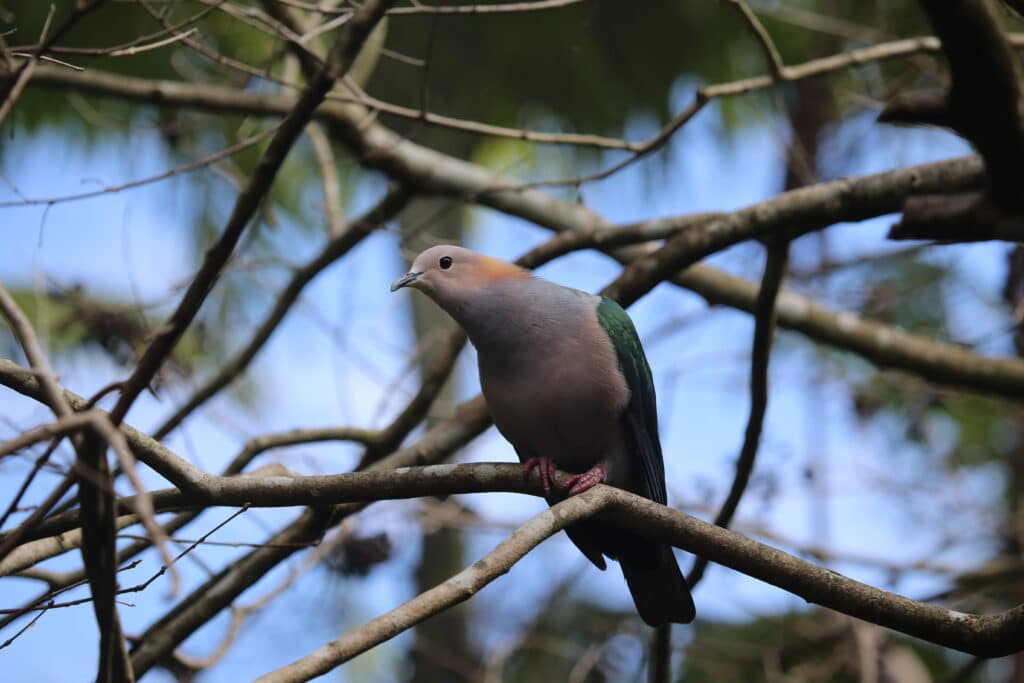
Asia’s big forest birds bear the brunt of hunting and habitat loss, while the heat is on for species on the front line of climate chaos. Meanwhile, rousing recoveries show us the way forward in this year’s Red List update.
The moment has finally arrived. Accompanied by her mate, the female Maleo leaves the Sulawesi rainforest in search of sand banks used by her species for generations. Together, the pair digs a deep hole into which the female deposits a single egg, five times the size of a chicken’s egg. They build a mound over it, adding twigs and leaves for camouflage. Then, they abandon it.
The parents’ work is over – but the chick’s work has only just begun. Incubated by the sun’s rays, or sometimes by volcanic heat from below the earth’s crust, the fully-formed miniature adult soon hatches. Fighting for air, it battles its way to the surface, then flutters into the undergrowth, ready to fend for itself from day one – almost like a real-life phoenix.
This might sound like a harsh start in life, but it is a system that has worked perfectly for thousands of years. It is only in modern times that we humans have tipped the balance. This year, after decades of decline, Maleo was uplisted from Endangered to Critically Endangered – mainly due to the unregulated collection of its eggs, which are considered a local delicacy. In addition, the plump, chicken-like adults are often hunted for food.
Compounding this problem is the rapid destruction of its forest home. Over 13% of Sulawesi’s forest has been cleared since 2000, and the rate is only set to accelerate. As a result, historic, centuries-old nesting sites are being abandoned, and the future of this fascinating bird is now in doubt.
By Jessica Law
Header image © cuatrok77 / Flickr
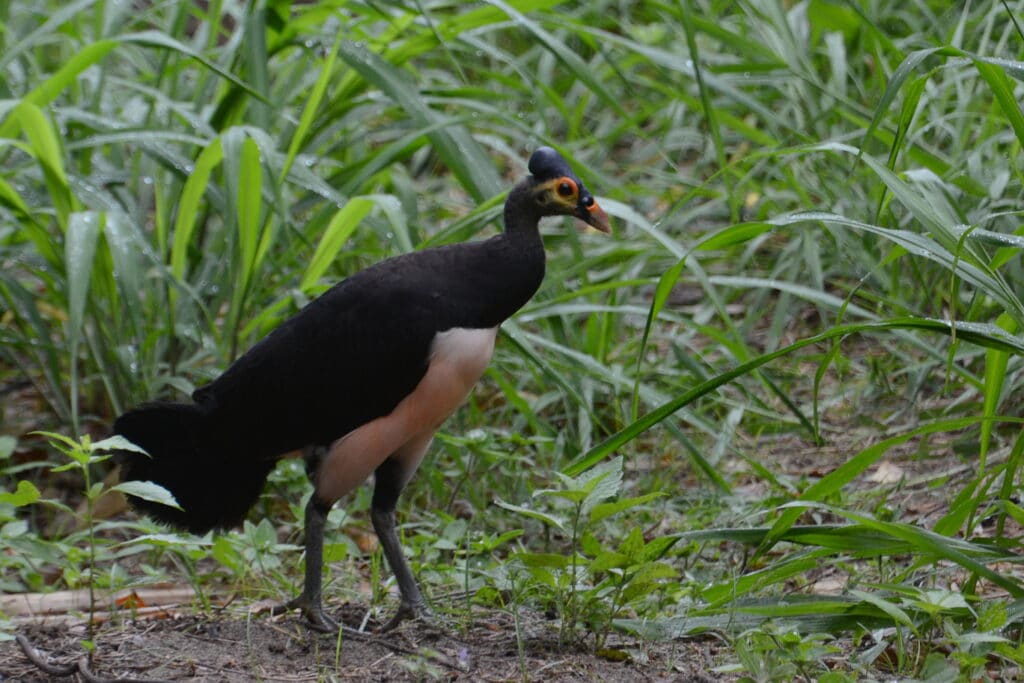
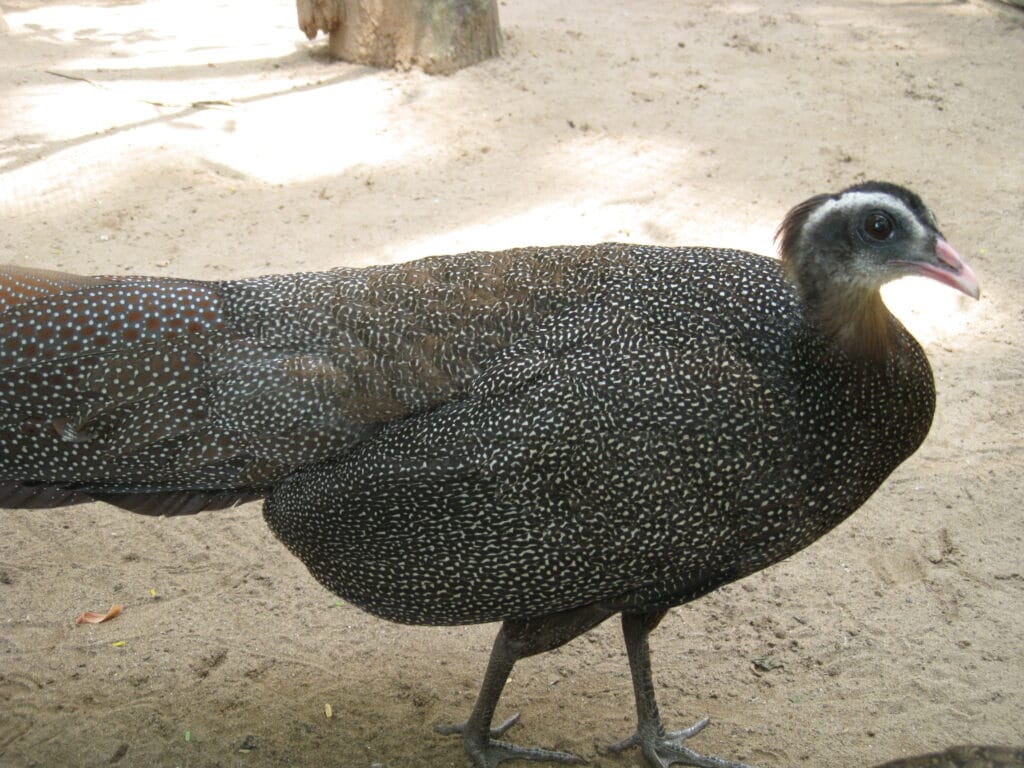
Maleo isn’t the only victim of over-hunting in the latest Red List update. This year, Vietnamese Crested Argus, a spectacular pheasant with a long, sweeping tail, was shuttled straight to the Critically Endangered category after being identified as a separate species to the Crested Argus in 2020. The cause of its decline is worrying: in recent decades, the lush mountain forests it inhabits have been subject to ‘industrial-level’ snaring. Researchers estimate that its population has plummeted by 90% in the past 30 years, and that forest clearance has probably made it easier for hunters to access the species.
Even birds that live in the forest canopy are not immune. Formerly widespread across the tropics of South-east Asia and New Guinea, Green Imperial-pigeon is experiencing declines in several countries due to unsustainable hunting, compounded by deforestation, and is now Near Threatened. But how can we combat such pervasive threats?
“There is some evidence to suggest that trapping of birds has worsened since the onset of the covid-19 pandemic as community livelihoods have become limited,” says Anuj Jain, Preventing Extinctions Coordinator for BirdLife Asia. “Developing sustainable community livelihoods in the current situation is a major challenge ahead of us.”
“Illegal and unsustainable trapping of birds has decimated many larger birds in South-east Asian forests, with ground birds being among the worst affected groups thanks to the abundance of easily available snares,”
Ding Li Yong, Flyways Coordinator for BirdLife Asia
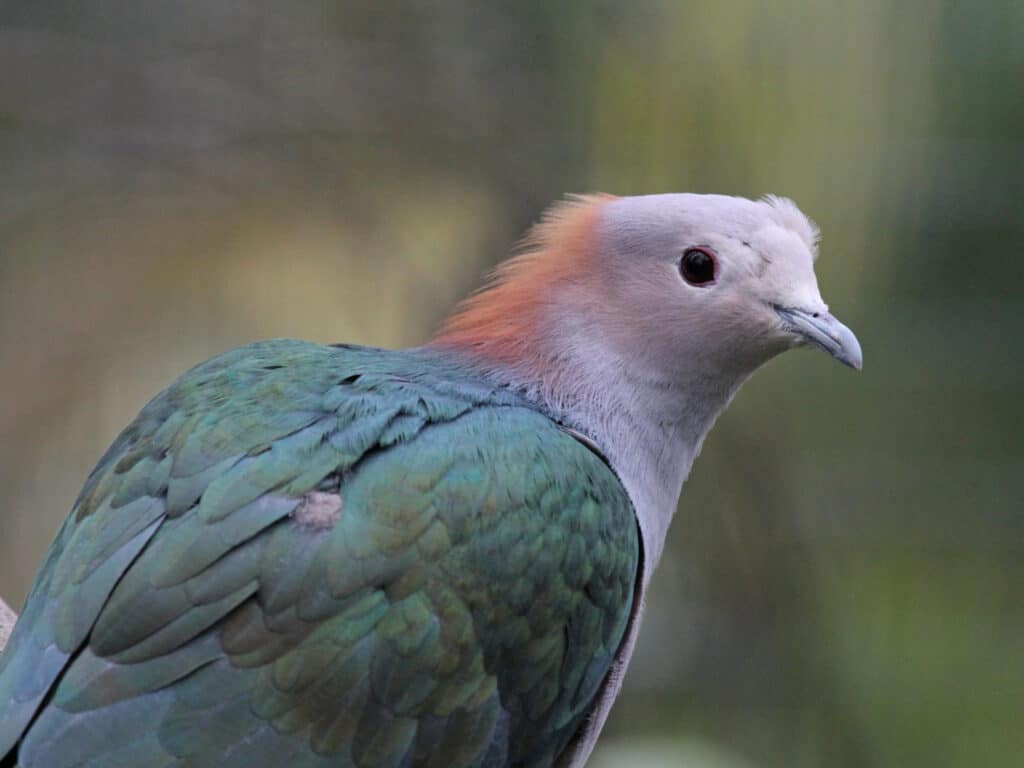
Another Asian bird species that was moved to a higher threat category this year is the Lesser Florican – a small bustard with distinctive twisted moustaches which inhabits lowland grasslands in western and central India. Worryingly, this year it was ‘uplisted’ from Endangered to Critically Endangered, due to the widespread destruction of its grassland home. Large areas of natural grassland are being converted to agricultural land, and the remaining patches are being degraded by overgrazing, invasive plants and disrupted rainfall patterns due to climate change. These dangers are compounded by the threat of feral dogs, hunting and egg-collecting. Even in flight, the species isn’t safe – researchers suspect that collisions with infrastructure such as roads and powerlines causes significant mortality.
The Bombay Natural History Society (BNHS, BirdLife Partner in India) and other local conservation organisations have been working with farmers in one last area around Ajmer in Rajasthan where the species persists, to raise awareness and incentivise the Lesser Florican’s protection. The landscape at Ajmer is all now cropland, so it is not optimal for the species, but the BNHS project has managed to remove invasive trees from nearby former grasslands and to establish a community conservation reserve for organic low-intensity farming.
“Of all the bird conservation crises in India this is the most urgent and yet the most neglected,” says BirdLife’s Nigel Collar, who also serves as co-chair of the IUCN Bustard Specialist Group. “We only have a few years to save this astonishing species, and BNHS needs all the support it can get to expand its valiant efforts.”
The Lesser Florican isn’t the only species impacted by climate change in this year’s Red List update. Even the heat-loving Maleo is predicted to experience a plummet in nesting success as temperatures and sea levels rise, according to recent reports. Furthermore, this year Fernandina’s Flicker, a woodpecker found only in Cuba, has been moved from Vulnerable to Endangered as a direct result of climate chaos. The species likes to nest in cavities within old, hollow palm trees – however, increasingly-frequent hurricanes are destroying these trees at a rate never seen before, without allowing time for new palms to grow and age.
Another species uplisted from Vulnerable to Endangered is the Maccoa Duck, found across Eastern and Southern Africa. This is due to pollution, entanglement in fishing nets and drainage of wetlands for agriculture.
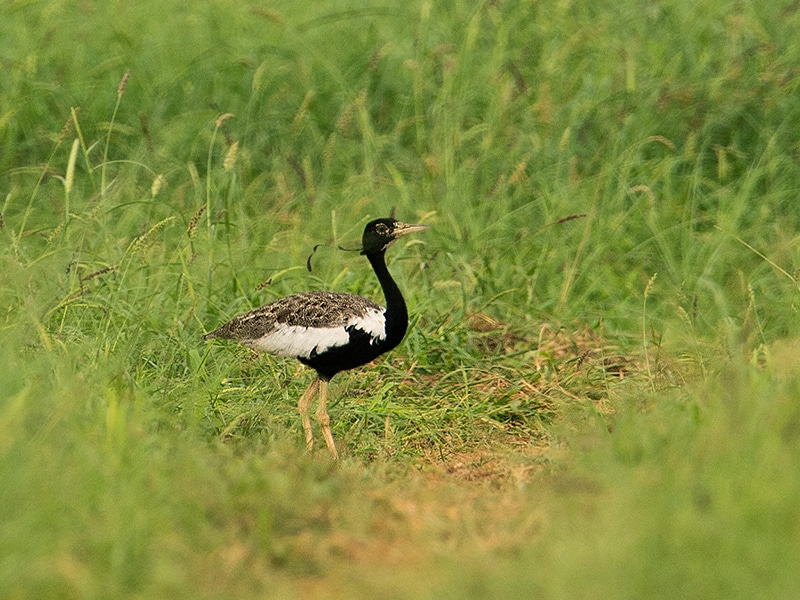
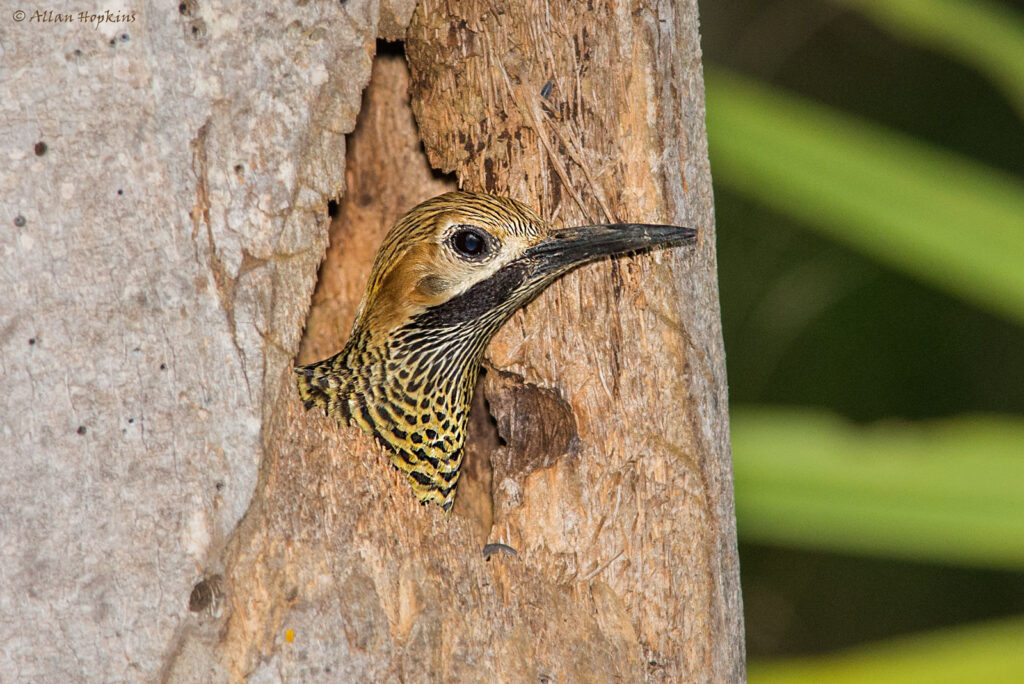
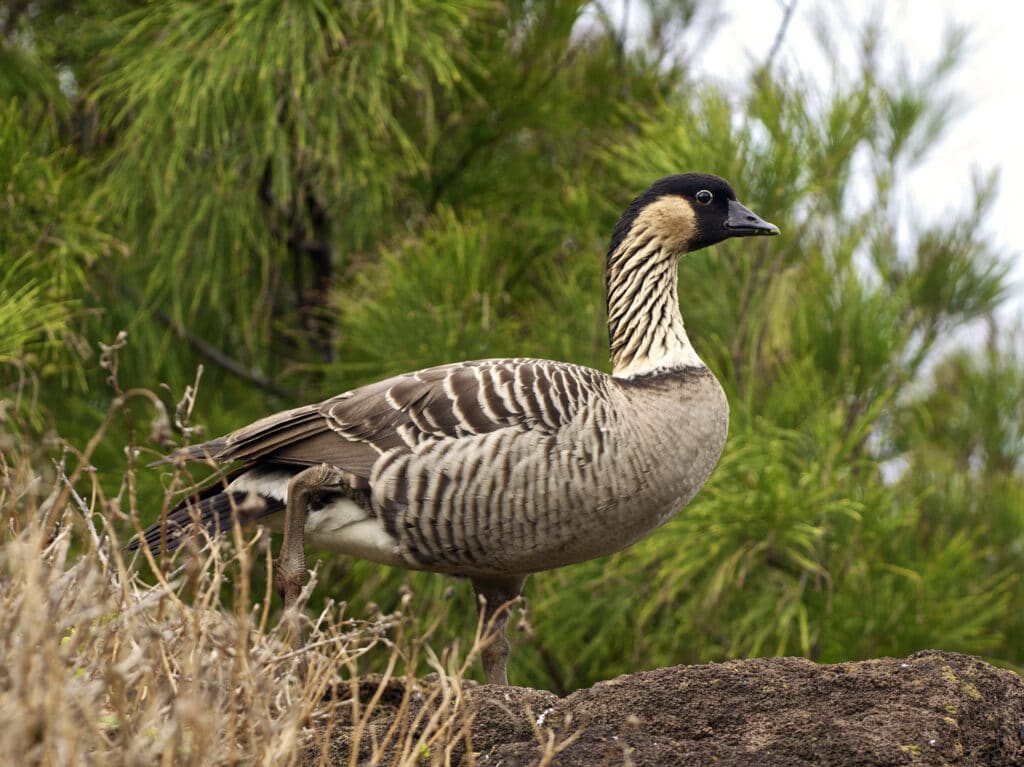
However, all is not yet lost, and recent successes show the great things that conservation action can achieve. This year, Indigo-winged Parrot was taken off the Critically Endangered list thanks to coordinated conservation efforts at its main stronghold in the cloud forest of Colombia’s central Andes. Here, conservation organisation ProAves created a protected area which is safeguarded from local threats such as mining, logging and cattle grazing. With the help of artificial nest boxes, the species’ population has been slowly recovering for more than a decade. It is still classed as Endangered, but its future looks far brighter.
Similarly, Hawaiian Goose has moved down a threat level, from Vulnerable to Near Threatened, thanks to a highly successful captive breeding and reintroduction programme. After extensive predator control and habitat restoration, the reintroduced populations have become truly “wild” and self-sustaining – showing that, if given the chance, it is possible for a species to rise from the ashes of near-extinction.
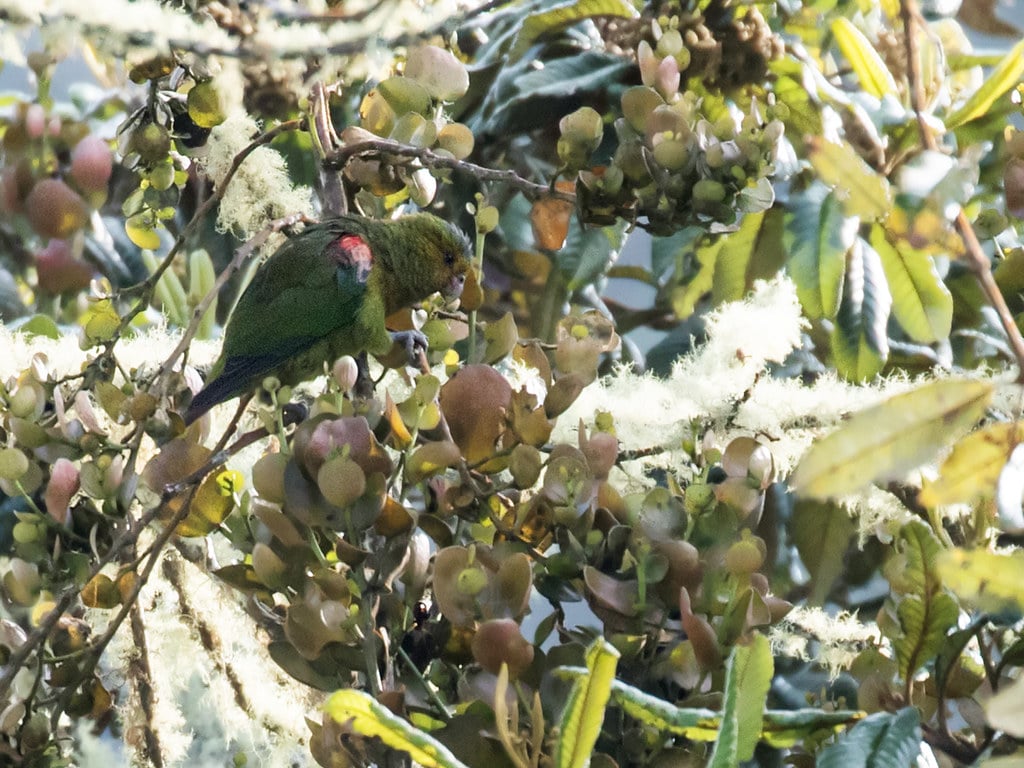
Stay up to date
Sign up to receive the latest bird conservation news. You’ll also receive updates about our projects, science and other ways to get involved including fundraising.
Thank you for your support, we are committed to protecting your personal information and privacy. For more information on how we use your data, please see our Privacy Policy. You can unsubscribe from emails at any time by using the link in the footer of any email from us.

